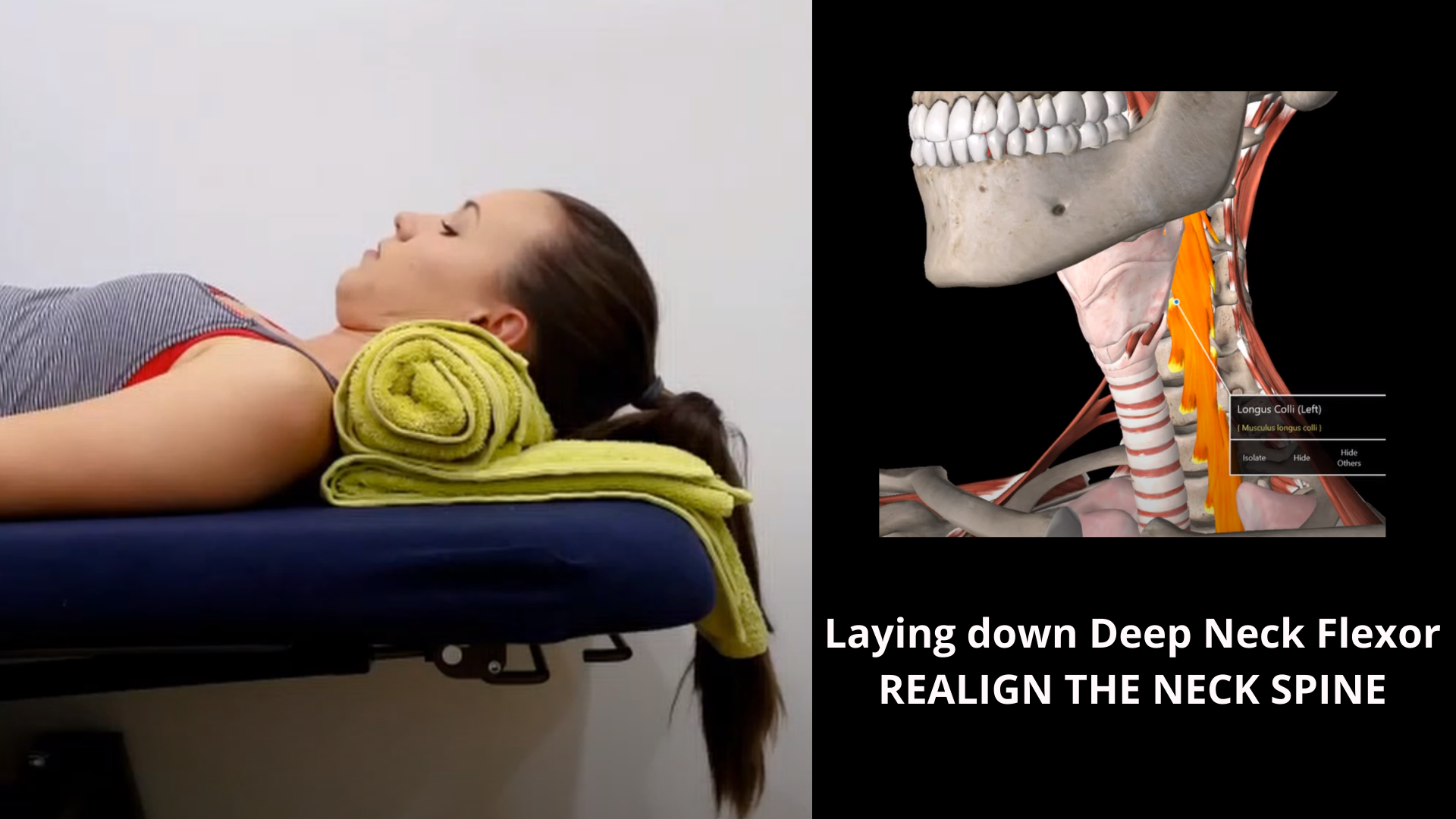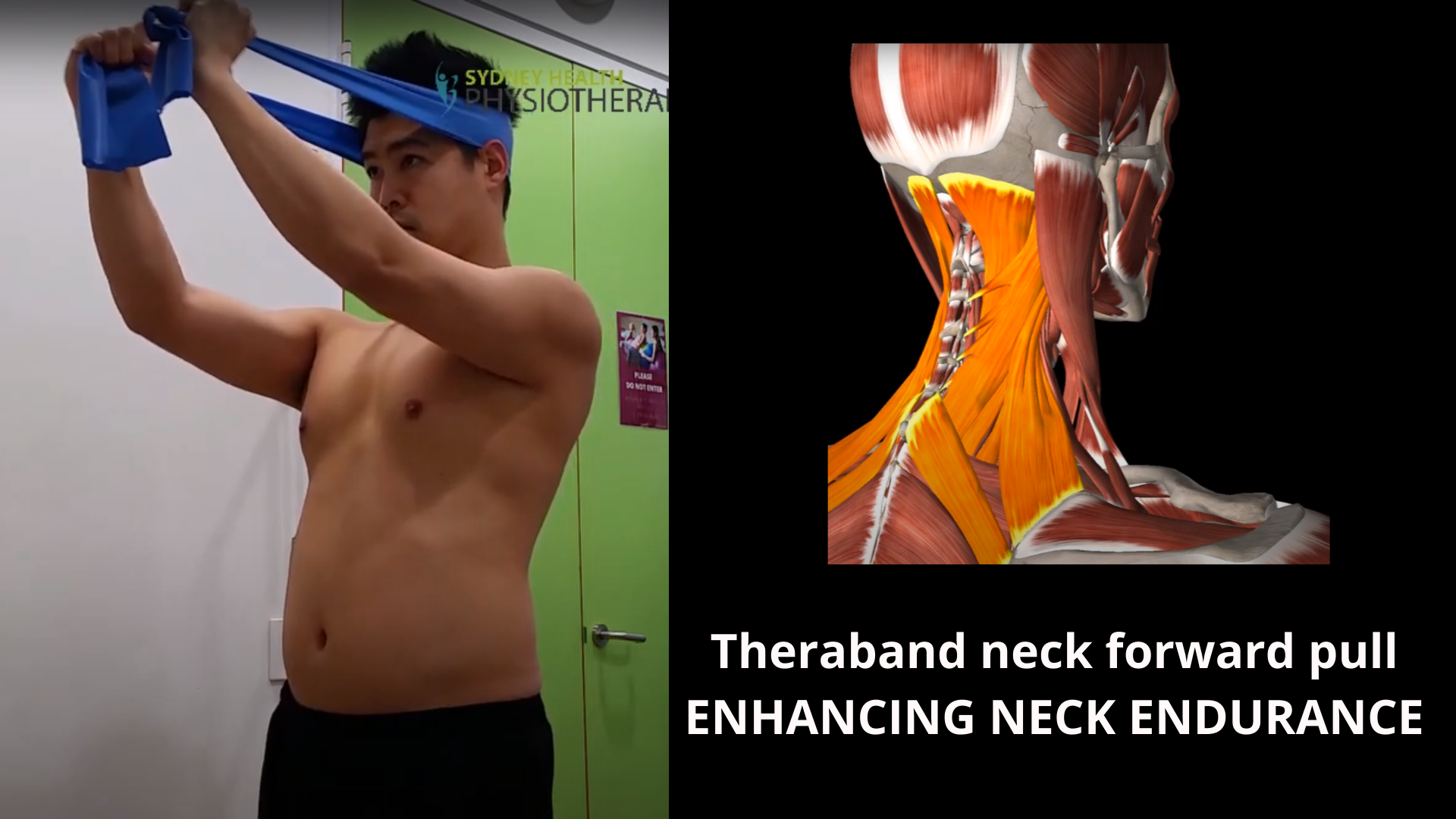Body Parts
Use the buttons below to show resources for specific body part
Resources related to head & neck
Neck rotation in the Sphinx (prone) position strengthens neck muscles and improves mobility, making it ideal for office workers with neck tension from prolonged sitting. This exercise promotes better posture, reduces stiffness, and enhances neck stability, supporting long-term spinal health.
The neck-turning exercise in a lying-down position gently relieves stiffness from wry neck and serves as an initial movement for whiplash recovery. This light exercise promotes neck mobility, eases muscle tension, and supports gradual improvement in range of motion, ideal for early-stage rehabilitation.
The deep neck flexor activation exercise with chin tucks in supine gently engages the neck muscles, making it ideal for the beginning stage of whiplash recovery. This exercise promotes neck stability, relieves tension, and supports a gradual improvement in neck control and alignment.
The theraband neck forward pull exercise builds endurance in the neck muscles, supporting better posture and neck stability. Ideal for individuals looking to strengthen neck control and reduce strain, this exercise promotes sustained muscle endurance, essential for long periods of sitting or desk work.
The head-back-shoulder whirl provides instant neck pain relief and rejuvenates tight muscles, easing tension and promoting relaxation. This gentle movement is ideal for relieving stiffness, improving circulation, and refreshing neck and shoulder muscles for immediate comfort.
Neck posture & ergonomics for office workers.
Understanding chronic pain. If you are experiencing pain that has lasted for more than a year, chances are your nervous system has been wired to become more sensitive to pain. Whilst our physiotherapists are able to help you with effective pain-relief, it is important for you to understand that sometimes the pain intensity does not equate to your injury severity. Understanding this helps giving you perspective, and will give you the much needed courage to continue improve.
Upper-crossed posture from long screen time leads to forward-rounded shoulders and a strained neck, common among those with long office hours. This posture imbalance places excess tension on the neck and upper back muscles, often resulting in discomfort and stiffness. Addressing this with targeted exercises can help realign posture and reduce neck strain.















Whiplash is a terminology for neck pain post car accident. This article gives you an understanding of how we treat whiplash, and what sort of support that you can expect to have here in Australia.